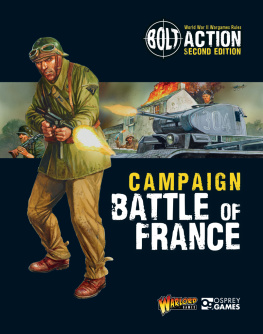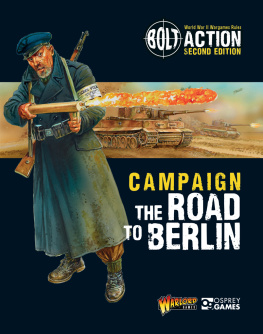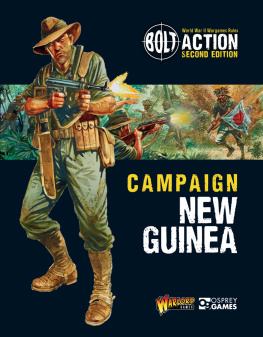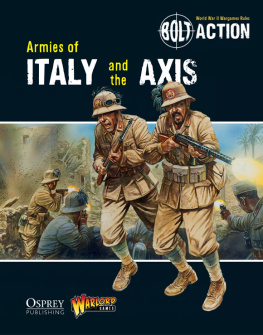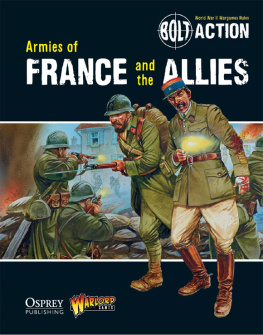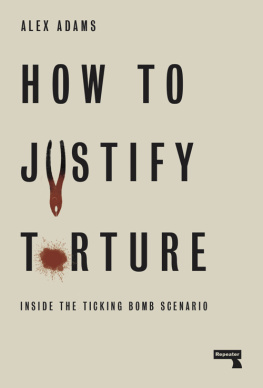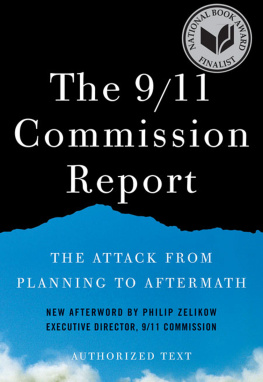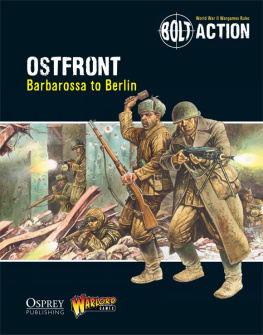
OSPREY GAMES
Bloomsbury Publishing Plc
PO Box 883, Oxford, OX1 9PL, UK
1385 Broadway, 5th Floor, New York, NY 10018, USA
E-mail:
www.ospreygames.co.uk
This electronic edition published in 2018 by Bloomsbury Publishing Plc
OSPREY GAMES is a trademark of Osprey Publishing Ltd
For more information on Bolt Action and other products, please visit www.warlordgames.com
Warlord Games
The Howitt Wing, Lenton Business Centre, Lenton Boulevard, Nottingham, NG7 2BY, UK
E-mail:
First published in Great Britain in 2018
Osprey Publishing Ltd, Warlord Games, 2018
Warlord Games has asserted their right under the Copyright, Designs and Patents Act, 1988, to be identified as Author of this work.
All rights reserved
You may not copy, distribute, transmit, reproduce or otherwise make available this publication (or any part of it) in any form, or by any means (including without limitation electronic, digital, optical, mechanical, photocopying, printing, recording or otherwise), without the prior written permission of the publisher. Any person who does any unauthorised act in relation to this publication may be liable to criminal prosecution and civil claims for damages.
A catalogue record for this book is available from the British Library.
ISBN: 978-1-4728-2880-4 (PB)
ISBN: 978-1-4728-2881-1 (eBook)
ISBN: 978-1-4728-2882-8 (ePDF)
ISBN: 978-1-4728-2883-5 (XML)
Osprey Games supports the Woodland Trust, the UKs leading woodland conservation charity. Between 2014 and 2018 our donations are being spent on their Centenary Woods project in the UK.
To find out more about our authors and books visit www.ospreypublishing.com. Here you will find our full range of publications, as well as exclusive online content, details of forthcoming events and the option to sign up for our newsletters. You can also sign up for Osprey membership, which entitles you to a discount on purchases made through the Osprey site and access to our extensive online image archive.
Contents

This book is an expansion to Bolt Action, the 28mm scale tabletop wargame set during the Second World War. Whilst there is historical detail within the narrative, this volume is not a history book it is first and foremost a wargaming supplement. The team who put this book together took feedback from reviews of previous supplements and opinions from the Bolt Action community via various Bolt Action social media groups. With this information to hand, the intention was to provide a good mixture of scenarios, new units, and new rules whilst still giving some historical background for context. Some previously published rules and units have also been reprinted this is to save players the expense of buying additional books for content which is vital to this volume, but might form only a small part of other books.
The Battle of France was an explosive and violent campaign, with actions taking place on two fronts and in neighbouring countries. Several key engagements have not been presented as scenarios in this book, merely due to the constraints of the book size and the authors wish to present a variety of very different scenarios for players. For those who are interested in a more in depth look at the actual historical events surrounding the campaign, a is provided.
CAMPAIGN OVERVIEW
The beginning of the Second World War is sometimes defined differently depending on the nation. For example, in Southeast Asia the war can logically be seen as a natural progression of the Second Sino-Japanese war which began in 1937, whilst conversely direct US involvement did not begin until as late as December 1941 after the attack on Pearl Harbor. For Western Europe, the Second World War began with the German invasion of Poland on 1 September 1939. Both France and Britain had given guarantees to Poland that if Polish independence was threatened they would provide assistance. Consequently, Hitler was delivered ultimatums by both nations to withdraw his forces from Poland when this demand was ignored, both France and Britain declared war on Germany on 3 September.
Military assistance to Poland from both nations was sparse and following Germanys success, Western Europe was drawn into a stalemate known as the Phoney War, where ground and air forces were involved only in limited skirmishes although the war at sea was fully waged by both sides from the outset.
But this was not to last. As the spring of 1940 approached, Hitler and his generals planned a lightning assault of France and the lowlands, intending to exploit speed and mobility to quickly smash through the Netherlands and Belgium and into France. This would avoid becoming bogged down in a static war centred around Frances extensive network of modern border defences, thus repeating the grim outcome of the First World War. But the military might of France was impressive over 2.2 million soldiers made up the active and reserve divisions of the French army, with more troops stationed on the border with Italy and garrisoned across the French colonial empire. A concerted effort to expand and modernize the French fleet had also resulted in one of the largest and most potent navies in the world.
Germanys plan hinged around rapid action and seizing key objectives before Frances massive military might could be mobilized. The campaign lasted only six weeks and in a few masterfully executed operations, saw Germany eliminate one of the worlds key political players. But, despite popular myths which have materialized in the interim, this six week campaign was far from easy and, despite being abandoned and betrayed by a weak government and the ineffective upper echelons of their own military, the front line French soldiers suffered massive casualties as they stoically dug their heels in and, in many areas, fought to the last man.

A venerable FT-17 tank supports French Infantry

The Great War of 19141918 was supposed to be the war to end all wars, proving to the entire world what the real capabilities were of the technology generated from the arms race of the late 19th and early 20th centuries. In four years, France had suffered approximately 1.7 million deaths and, consequently, the appetite for war was at an absolute low during the 1920s and 1930s. Likewise, Great Britain had suffered some one million fatalities that induced a great anti-war sentiment amongst its population. Germany, whose death toll numbered between 2.2 and 2.8 million, not only suffered greatly from the devastating losses of human life but also saw crippling restrictions placed upon its economy and loss of territory following the cessation of hostilities.
The Allied sentiment of squeezing Germany until the pips squeak at the Treaty of Versailles was, in many ways, the origin of the Second World War and with it the Battle of France in 1940. Germany was not invited to the peace talks and so was wracked by severe financial reparations that contributed to the colossal problems with hyperinflation during the 1920s. The German people were beginning to lose faith in their socialist government. Added to this was Article 231, which specified:

